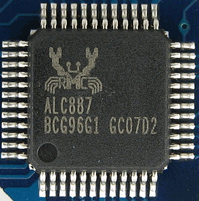修复 Linux 中的一个噪音问题
自从安装了 Kubuntu 20.04 后,我被一个噪音问题困扰了很久。系统在播放声音前,总会发出一两声短促的噪音。然后继续正常播放声音。后来经过一些研究,我在不久前解决了这个问题。
刚安装完操作系统后,我安装了媒体播放器,体验音乐和电影的播放效果。在操作过程中,我注意到系统偶尔会发出的短促噪音。在网上搜索一阵,并且尝试了一些方法后,问题没有得到解决。我便放弃了,只当是驱动程序可能有缺陷。
不过我渐渐地发现了一个规律:噪音只会在一段安静时间后,再次播放声音前产生。在持续播放声音过程中,从来没有噪音。这让我猜测到了一种可能的原因:系统在播放声音一段时间后可能会关闭音频设备,然后在下一次播放前再打开音频设备。打开音频设备的过程中有可能产生电信号的突变,继而产生短促的噪音。这种设计极有可能是基于省电的考虑。
于是,我以“Linux save power audio noise”为关键词搜索了一番。在 Redhat 公开的 BUG 管理系统中,我找到了2017年报告的一个 BUG:《Bug 1525104 - Clicking noise when start or stop sound playing》。
这个 BUG 所描述的问题和我的相同,并且 Jeremy 似乎给出了解决问题的办法。
Jeremy Cline 2017-12-13 18:06:49 UTC
Can you pass snd_hda_intel.power_save=0 on the kernel command line and see if that resolves your issue?
Thanks
Riku Seppala 2017-12-13 18:25:50 UTC
Yes, that seems to resolve this for me.
这个方案虽然可行,但需要通过修改 grub 的配置来修改内核命令行参数。即有风险又麻烦,普通用户不好操作。我决定找一个更容易操作的方法。
“snd_hda_intel.power_save=0”看起来是把“snd_hda_intel”内核模块的“power_save”参数设置为0。那么问题应该是出在这个内核模块上了。于是我下载了 ubuntu 的内核源码,找到了这个内核模块。经过一番搜索,找到了这部分代码(linux-source-5.4.0/sound/pci/hda/hda_intel.c):
#ifdef CONFIG_PM
static int param_set_xint(const char *val, const struct kernel_param *kp);
static const struct kernel_param_ops param_ops_xint = {
.set = param_set_xint,
.get = param_get_int,
};
#define param_check_xint param_check_int
static int power_save = CONFIG_SND_HDA_POWER_SAVE_DEFAULT;
module_param(power_save, xint, 0644);
MODULE_PARM_DESC(power_save, "Automatic power-saving timeout "
"(in second, 0 = disable).");
static bool pm_blacklist = true;
module_param(pm_blacklist, bool, 0644);
MODULE_PARM_DESC(pm_blacklist, "Enable power-management blacklist");
/* reset the HD-audio controller in power save mode.
* this may give more power-saving, but will take longer time to
* wake up.
*/
static bool power_save_controller = 1;
module_param(power_save_controller, bool, 0644);
MODULE_PARM_DESC(power_save_controller, "Reset controller in power save mode.");
#else
#define power_save 0
#endif /* CONFIG_PM */
阅读这段代码后,我发现 power_save 参数并非简单地开启或者关闭省电模式,而是一个超时时间。增大超时时间可以降低进入省电模式的频率,从而减少噪音产生的次数。设置0可以直接关闭省电模式。于是问题就变得简单了,我的台式电脑似乎并不那么在乎功耗,所以我决定关闭音频设备的省电模式。用这条命令可暂时关闭省电模式。系统重启后失效。
$ sudo echo 0 > /sys/module/snd_hda_intel/parameters/power_save
若要永久关闭设备的省电模式,在/etc/modprobe.d/中添加一个“disable_snd_hda_intel_power_save.conf”文件,在文件中添加这一行:
options snd_hda_intel power_save=0
一个更深入的问题
为什么 Linux 中有这个问题,而 Windows 操作系统中没有?
Linux 的文档中有一个章节:More Notes on HD-Audio Driver。这一节中介绍了 HD-audio 设备的大致结构。这里引用其中一段:
The HD-audio component consists of two parts: the controller chip and the codec chips on the HD-audio bus. Linux provides a single driver for all controllers, snd-hda-intel. Although the driver name contains a word of a well-known hardware vendor, it’s not specific to it but for all controller chips by other companies. Since the HD-audio controllers are supposed to be compatible, the single snd-hda-driver should work in most cases. But, not surprisingly, there are known bugs and issues specific to each controller type. The snd-hda-intel driver has a bunch of workarounds for these as described below.
这里说:HD-audio 组件由控制器芯片和解码芯片组成。Linux 提供了控制器芯片的驱动程序。在 snd_hda_intel 模块中,我找到了解码芯片的省电模式的驱动代码(linux-source-5.4.0/sound/pci/hda/hda_codec.c):
static void codec_set_power_save(struct hda_codec *codec, int delay)
{
struct device *dev = hda_codec_dev(codec);
if (delay == 0 && codec->auto_runtime_pm)
delay = 3000;
if (delay > 0) {
pm_runtime_set_autosuspend_delay(dev, delay);
pm_runtime_use_autosuspend(dev);
pm_runtime_allow(dev);
if (!pm_runtime_suspended(dev))
pm_runtime_mark_last_busy(dev);
} else {
pm_runtime_dont_use_autosuspend(dev);
pm_runtime_forbid(dev);
}
}
原来音频设备的低功耗是通过控制解码芯片来实现的。于是我猜测电脑主板上应该有这样一个解码芯片:在省电模式中断电,在工作模式中供电。
我使用的是华硕 B85M-F 型号的主板,在华硕的官网中搜到了此主板的规格说明。此主板搭载了 Realtek® ALC887 8-Channel High Definition Audio CODEC 音频解码芯片。我又在网上找到了这个芯片的数据手册,里面有它的长相和引脚定义。它长这个样子:

我在电脑主板上找到了这个芯片,然后把 snd_hda_intel 模块的省电模式打开,用万用表在它的供电引脚上量到了电平的变化。正如我之前猜测的一样:播放声音一段时间后,停止供电。播放声音前,恢复供电。
最后,我抱着试试看的态度,换了一块硬盘,装上 Windows 10。经过半个多小时的测试,这个音频解码芯片的供电始终没有被切断。看来,Windows下的驱动并没有在低功耗方面理会此芯片。
到此,这个问题不再扑朔迷离。然而这个问题引发了我更深地思考:当此问题初现的时候,我的第一印象是 Linux 在这些细节上处理的还不够成熟。然而经过以上研究过程,我认为是 Linux 的开发人员追求极致的风格导致了这些琐碎的问题。上文提及的2017年报告的 BUG,到现在依然被开发者们追踪并修改,我为这些开发者们的精神所折服。
——2020年5月17日